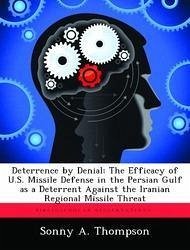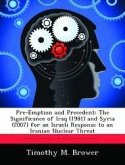The United States has significantly increased the deployment of missile defense systems, specifically Patriot and Aegis Ballistic Missile Defense (Aegis-BMD), to the Persian Gulf over the past six years. The increase from no missile defense assets in 2005 to two Patriot battalions spread across four Gulf Cooperation Council (GCC) countries was specifically intended for Iran. According to published Department of Defense reviews and statements from United States (U.S.) officials, the increase in forward presence is intended to deter an Iranian regional missile attack and to assure GCC partners of the U.S. resolve in the region. The purpose of this study is to assess whether or not the presence of the U.S. missile defense assets actually contributes deterrent effects against the will of Iranian leaders, to execute a necessary regional missile attack. The author investigates the credibility of the Iranian threat in terms of capability and will. He also assesses the effectiveness of U.S. missile defense assets in the region by investigating the relationship between intent of the deployment, forces allocated for this intent, and the offensive/defensive balance with the Iranian threat. Ultimately, this paper finds that U.S. missile defense assets in the Persian Gulf region, though arguably the best in the world, are not postured to strengthen conditions for deterrence.
Hinweis: Dieser Artikel kann nur an eine deutsche Lieferadresse ausgeliefert werden.
Hinweis: Dieser Artikel kann nur an eine deutsche Lieferadresse ausgeliefert werden.








